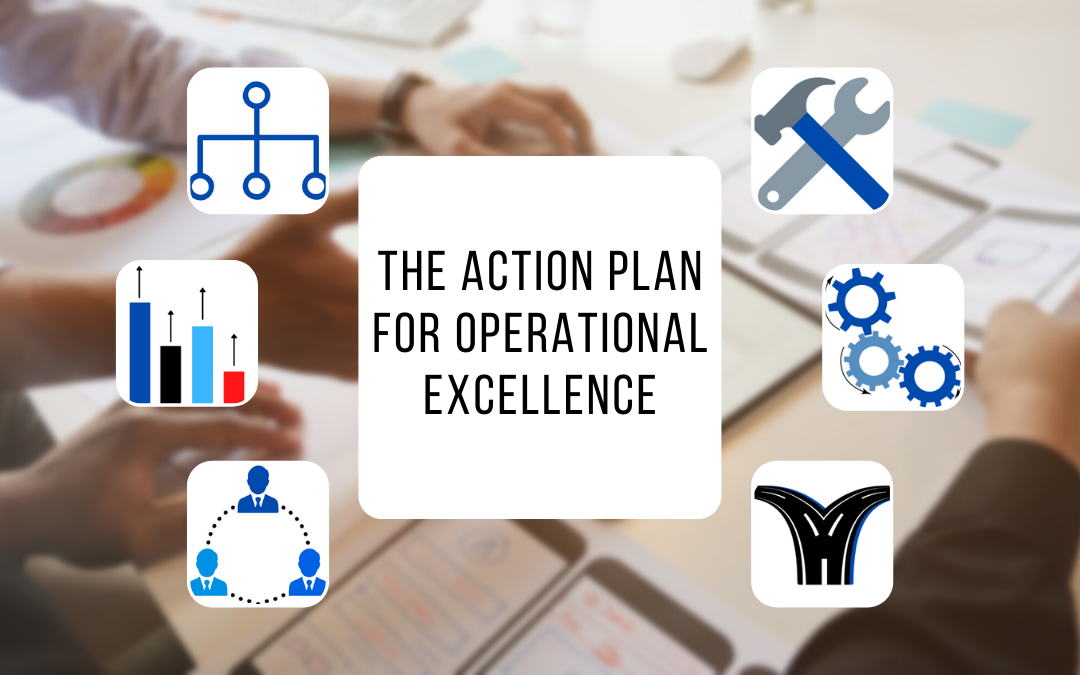In order to optimize the management of a company, it is necessary to use efficient and flexible methods to achieve operational excellence and manage priorities. The development of a action plan is an example which is in line with this approach. It is used to list all the elements necessary for the proper functioning of the company. To achieve success in process optimization, all stakeholders and partners in the company must be involved.
Definition of operational excellence
This term refers to the implementation of a reliable business strategy that meets the many and constantly changing requirements of the market. Operational excellence is an approach that is built using relevant methods that aim to improve the operations of all the company’s players, in order to achieve collective performance. To this end, the development of an action plan provides a clear and centralized vision of all the steps necessary to optimize processes to excel in the steering the company.
The pillars necessary to develop an operational excellence action plan
The construction of a reference tool to put in place the means to achieve effective operational excellence is divided into several stages. These include the choice of strategy, process management, structuring of performance tools, areas for improvement, role allocation and employee investment.
The choice of strategy
The development of an elaborate strategy and action plan has the function of defining the priorities and simplifying the implementation of the defined actions, in order to achieve operational excellence. This stage includes the formulation of the overall objectives and details that relate to the company’s professional mission, taking into account the environmental context. The indicators of operational excellence in strategy development are based on a clear, achievable and effective global and specific vision.


Process management
Process management encompasses various models, procedures and methods, which can be presented in the form of tables or roadmaps. In order to achieve operational excellence, an assessment of people’s needs must be carried out so that the methods used enable employees to better understand their function. The key to success is to develop simple, clear, concise, understandable and flexible tools.
Structuring performance tools
This phase consists of breaking down all the elements of the company’s strategy into operational objectives and indicators. This allows the management to make decisions adapted to the situation and to propose optimal actions. The structuring of tools includes professional meetings, data collection and analysis, and the use of dashboards.


Areas for improvement
The assessment of a company’s operational excellence is based on continuous improvement indicators that are an integral part of the roadmap. The areas of improvement are built on different components such as:
- The management of work standards that integrate the postponement of decisions taken in terms of task management, to limit losses and delays. The key to success is regular updates to ensure the efficiency of the processes.
- Problem solving involves the development of a method that consists of breaking down the actions to be implemented into steps, in order to move towards the best solution. Among the most important steps are: identification and clarification of the problem, definition of the current situation, objectives, analysis of dysfunctions, definition of the action plan with monitoring of the results and implementation of the necessary adjustments.
- Eliminating waste optimizes productivity and reduces costs. The purpose of this operation is to limit production, inventory or the execution of non-value added tasks.
- Sharing knowledge mobilizes the resources of all partners.
The structure of the organization
An organizational and operational pillar must be structured and allow for a global vision. It defines the responsibilities of the various actors, from the management to the secretariat, including all employees and partners of the company. The mode of communication between the different actors is also defined.
Each staff member is part of the organisational structure, through his or her role and responsibilities which also impact on those of his or her colleagues. Interactions between employees depend on the structure (source, recipient, mode of communication, type of information).
Critical to the success of the organization are: a clear definition of the framework, a clear explanation of the assignment of roles and responsibilities, and consistent and appropriate communication.


Employee investment
The final point in the development ofan action plan The final point in developing a relevant plan is to involve all stakeholders in the process. Once management has made decisions about what should be included in the business model, it must motivate its staff to adhere to it. In order to achieve this, it is important to communicate with them by developing a participatory mode of communication to ensure the long-term success of the organizational method.
In order to motivate staff to be more productive, new responsibilities should be given. It is also important to take an interest in the professional development of each individual, mobilizing resources while respecting the company’s code of ethics.
